Want to know more about the Best Architecture Schools In the US and make an informed decision? Here is a good place to start.
If you’re ready to turn your architectural daydreams into sky-high realities, you’re in the right place. Join us as we explore the best architecture schools in the US, where you’ll be molding minds and buildings alike.
So grab your T-squares and let’s dive into the world of perfect angles and gravity-defying designs!
Please note that schools are selected based on our criteria (at the end of the article), ranked by the latest acceptance rate.
Table of Contents
#25. Auburn University

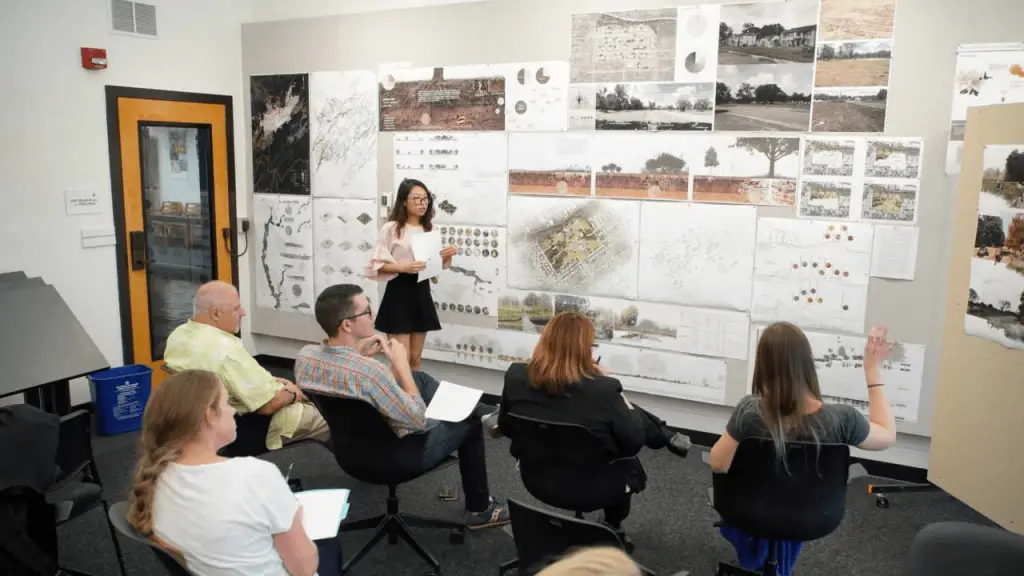
- Acceptance rate: 85%
- Average entry score: 1170-1350 SAT or 24-30 ACT
- Student-to-faculty ratio: 29 to 1
- Estimated cost of attendance (tuition and fees): $52,838
- Average earning potential for graduates: $53,358 (College Factual)
Auburn’s School of Architecture, Planning, and Landscape Architecture is distinguished by its focus on community engagement and hands-on learning.
The school’s renowned Rural Studio program offers students the opportunity to design and build real projects in underserved communities, fostering a deep understanding of the social impact of architecture.
This immersive, collaborative approach equips graduates with the skills and perspectives needed to create meaningful, transformative designs that respond to the needs of diverse communities and environments.
Source: Auburn University
#24. Pratt Institute
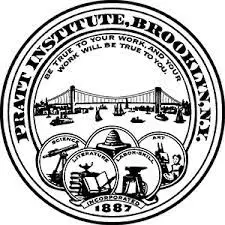

- Acceptance rate: 68%
- Average entry score: 1370 SAT or 30 ACT
- Student-to-faculty ratio: 9 to 1
- Estimated cost of attendance (tuition and fees): $72,990
- Average earning potential for graduates: $51,000 (College Simply)
Pratt Institute’s School of Architecture offers a comprehensive curriculum that emphasizes design excellence, critical thinking, and social responsibility.
Students engage in collaborative design studios, learn from renowned faculty, and participate in internships and study abroad programs.
The school’s focus on sustainability, technology, and urbanism prepares graduates to create meaningful, innovative spaces that improve the quality of life for their communities.
Source: School of Architecture
#23. Southern California Institute of Architecture


- Acceptance rate: 64%
- Average entry score: 1180-1410 SAT
- Student-to-faculty ratio: 15 to 11
- Estimated cost of attendance (tuition and fees): $50,690
- Average earning potential for graduates: $48,600 (College Factual)
The Southern California Institute of Architecture (SCI-Arc) offers an innovative curriculum that challenges conventional architectural thinking.
Architecture students engage in a highly collaborative, experimental, and interdisciplinary learning environment, exploring cutting-edge design technologies and fabrication methods.
SCI-Arc’s emphasis on creativity, critical thinking, and hands-on learning prepares graduates to become visionary architects and leaders in the field.
Source: SCI-Arc
#22. Texas A&M University


- Acceptance rate: 63%
- Average entry score: 1160-1390 SAT or 25-31 ACT
- Student-to-faculty ratio: 21 to 1
- Estimated cost of attendance (tuition and fees): $58,976
- Average earning potential for graduates: $38,352 (College Factual)
Texas A&M University’s College of Architecture provides a comprehensive architectural education that emphasizes design, technology, and sustainability.
Students engage in hands-on design studios, collaborate with interdisciplinary teams, and participate in study abroad programs and internships.
This school’s focus on research, community outreach, and environmental responsibility prepares graduates to create resilient, sustainable spaces that address the needs of diverse populations.
Source: Texas A&M University
Similar articles like this:
- 25 Best Schools For Economics In The US
- 25 Best Schools For Biology In The US
- 25 Best Schools For English Language and Literature in the US
- 10 Highest Paying Cyber Security Jobs to Consider 2024
#21. Syracuse University


- Acceptance rate: 59%
- Average entry score: 1260-1410 SAT or 28-32 ACT
- Student-to-faculty ratio: 15 to 1
- Estimated cost of attendance (tuition and fees): $60,135
- Average earning potential for graduates: $50,400 (College Simply)
Syracuse University’s School of Architecture emphasizes design thinking, experimentation, and collaboration through its studio-based curriculum.
Students learn from distinguished faculty, engage in hands-on workshops, and participate in global study programs.
The school’s commitment to research, civic engagement, and sustainable design prepares graduates to tackle complex architectural challenges and create spaces that enrich the human experience.
Source: Syracuse University
#20. Washington University in St. Louis


- Acceptance rate: 54%
- Average entry score: 1220-1470 SAT or 29-34 ACT
- Student-to-faculty ratio: 9 to 1
- Estimated cost of attendance (tuition and fees): $58,470
- Average earning potential for graduates: $51,800 (College Simply)
The Sam Fox School of Design & Visual Arts at Washington University in St. Louis provides a collaborative and interdisciplinary architecture program.
Students learn through a combination of design studios, seminars, and hands-on workshops, gaining exposure to diverse perspectives and innovative design strategies.
The school’s emphasis on research, community engagement, and global awareness prepares graduates to become thoughtful, responsible architects.
Source: Sam Fox School of Design & Visual Arts
#19. University of Texas at Austin


- Acceptance rate: 28%
- Average entry score: 1230-1480 SAT or 29-34 ACT
- Student-to-faculty ratio: 18 to 1
- Estimated cost of attendance (tuition and fees): $57,512
- Average earning potential for graduates: $51,821 (College Factual)
UT Austin’s School of Architecture emphasizes the importance of sustainable design, community engagement, and social responsibility in the architectural field.
Students are encouraged to immerse themselves in Austin’s unique urban and environmental context, fostering a deep understanding of the impact of architecture on the world.
The school offers a wide range of courses, research opportunities, and hands-on experiences, allowing students to develop their skills and contribute to the improvement of the built environment.
Source: School of Architecture, UT-Austin
#18. University of Michigan Ann Arbor


- Acceptance rate: 26%
- Average entry score: 1360-1530 SAT or 31-35 ACT
- Student-to-faculty ratio: 15 to 1
- Estimated cost of attendance (tuition and fees): $69,326
- Average earning potential for graduates: $51,100 (College Simply)
At the University of Michigan Ann Arbor, the Taubman College of Architecture and Urban Planning offers a diverse curriculum that emphasizes design, sustainability, and technology.
Students are exposed to hands-on learning through studios, workshops, and internships, fostering a collaborative and innovative environment. The school’s research-driven approach prepares students to tackle real-world challenges and develop groundbreaking architectural solutions.
Source: Taubman College
Similar articles like this:
#17. University of Virginia


- Acceptance rate: 20%
- Average entry score: 1320-1510 SAT or 30-34 ACT
- Student-to-faculty ratio: 15 to 1
- Estimated cost of attendance (tuition and fees): $36,840-$70,808
- Average earning potential for graduates: $56,020 (College Factual)
UVA’s School of Architecture emphasizes the importance of design, history, and sustainability in architectural education. The school’s unique curriculum encourages students to engage with the rich architectural heritage of the region, preparing them to address contemporary challenges in the built environment.
By fostering a deep understanding of historical context and promoting innovative design strategies, UVA’s School of Architecture equips graduates with the skills and knowledge needed to create sustainable, culturally responsive designs that contribute to the vitality of communities and the landscape.
Source: University of Virginia School of Architecture
#16. Georgia Institute of Technology


- Acceptance rate: 16%
- Average entry score: 1390 SAT
- Student-to-faculty ratio: 21 to 1
- Estimated cost of attendance (tuition and fees): $53,010
- Average earning potential for graduates: $53,970 (College Factual)
Georgia Tech’s College of Design offers a rigorous architecture program that combines cutting-edge technology with a strong foundation in design principles.
Students explore digital design, fabrication, and sustainable practices through hands-on studios, research opportunities, and collaborations with industry partners.
The school’s emphasis on innovation and interdisciplinary learning equips graduates with the skills to excel in the rapidly evolving field of architecture.
Source: Georgia Tech School of Architecture
#15. University of Notre Dame


- Acceptance rate: 15%
- Average entry score: 1410-1550 SAT or 32-35 ACT
- Student-to-faculty ratio: 9 to 1
- Estimated cost of attendance (tuition and fees): $78,347
- Average earning potential for graduates: $58,141 (College Factual)
The School of Architecture at the University of Notre Dame focuses on classical architecture and traditional urbanism, with a strong emphasis on sustainability and human-centered design.
Students engage in immersive studio experiences, study abroad programs, and community-based projects, learning from renowned faculty and practicing architects. This unique approach prepares graduates to create timeless, enduring structures that contribute positively to society.
Source: School of Architecture, University of Notre Dame
#14. Carnegie Mellon University


- Acceptance rate: 14%
- Average entry score: 1480-1560 SAT or 33-35 ACT
- Student-to-faculty ratio: 6 to 1
- Estimated cost of attendance (tuition and fees): $77,474
- Average earning potential for graduates: $44,216 (College Factual)
CMU’s School of Architecture is renowned for its emphasis on the integration of design, technology, and sustainability.
The school’s unique, forward-thinking curriculum combines hands-on studio work with cutting-edge research, equipping students with the skills and knowledge to become leaders in the field of architecture.
With a strong commitment to innovation and a focus on addressing complex global challenges, CMU’s School of Architecture prepares graduates to create sustainable, impactful designs that shape the future of the built environment.
Source: CMU School of Architecture
Similar articles like this:
#13. University of California Los Angeles


- Acceptance rate: 14%
- Average entry score: 1290-1520 SAT
- Student-to-faculty ratio: 18 to 1
- Estimated cost of attendance (tuition and fees): $31,949
- Average earning potential for graduates: $53,431 (College Factual)
UCLA’s School of Arts and Architecture cultivates a culture of experimentation, innovation, and collaboration among its students. Encouraging exploration of the boundaries of design, technology, and urbanism, the school prepares graduates to become leaders in the ever-evolving world of architecture.
With a diverse faculty and a commitment to interdisciplinary research, UCLA’s School of Arts and Architecture offers students a dynamic, supportive environment in which to develop their creative vision and engage with the complex challenges facing the built environment today.
Source: UCLA Architecture and Urban Design
#12. University of California Berkeley


- Acceptance rate: 14%
- Average entry score: 1415 SAT
- Student-to-faculty ratio: 17 to 1
- Estimated cost of attendance (tuition and fees): $71,632
- Average earning potential for graduates: $52,215 (College Factual)
UC Berkeley’s College of Environmental Design provides an integrated approach to architecture, combining theory and practice.
Students explore sustainable design, urbanism, and social justice, preparing them to address complex challenges in the built environment.
With a strong focus on personalized education, the college offers a supportive learning environment, experienced faculty, and numerous career opportunities for graduates in architecture and related fields.
Source: Berkeley Architecture
What’s it like to study at the University of California Berkeley?
#11. University of Southern California


- Acceptance rate: 13%
- Average entry score: 1320-1520 SAT or 30-34 ACT
- Student-to-faculty ratio: 9 to 1
- Estimated cost of attendance (tuition and fees): $60,446
- Average earning potential for graduates: $60,864 (College Factual)
USC School of Architecture focuses on the significance of design, research, and collaboration in architectural education. Students are encouraged to explore innovative solutions to real-world problems, preparing them for leadership roles in the ever-evolving field of architecture.
The school offers a wide range of programs, including architecture, landscape architecture, and urban planning, allowing students to tailor their education to their specific interests.
USC’s strong connections to professional practice and its location in Los Angeles provide students with unique opportunities to engage with the city’s diverse architectural landscape.
Source: USC School of Architecture
#10. Cornell University

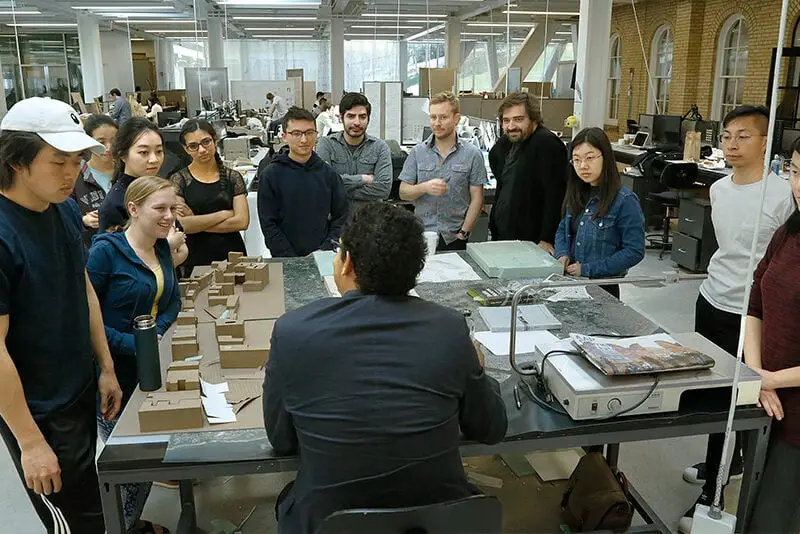
- Acceptance rate: 11%
- Average entry score: 1450-1560 SAT or 33-35 ACT
- Student-to-faculty ratio: 9 to 1
- Estimated cost of attendance (tuition and fees): $78,992
- Average earning potential for graduates: $48,400 (College Factual)
Cornell AAP (College of Architecture, Art, and Planning) provides students with a comprehensive and diverse range of architectural ideas and methodologies.
The school places a strong emphasis on both technical skills and theoretical knowledge, ensuring a well-rounded education that equips graduates for success in the architectural field.
Students are exposed to various design approaches, sustainability practices, and urban planning concepts, while also engaging in interdisciplinary collaborations and research projects.
Source: Cornell AAP
What’s it like to study at Cornell University?
Similar articles like this:
#9. New York University
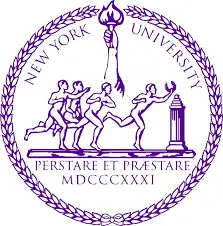

- Acceptance rate: 10%
- Average entry score: 1455 SAT or 33 ACT
- Student-to-faculty ratio: 8 to 1
- Estimated cost of attendance (tuition and fees): $80,878
- Average earning potential for graduates: $60,500 (College Simply)
New York University offers an interdisciplinary approach to architectural education, integrating architecture, urbanism, and technology.
Students engage in hands-on design studios, research projects, and collaborations with local communities, learning to address complex urban challenges.
The program’s strong emphasis on sustainability, social equity, and innovative design prepares graduates to create transformative spaces in diverse urban contexts.
Source: NYU
#8. Rice University
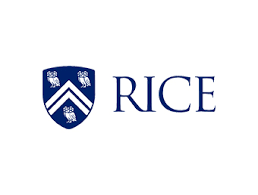

- Acceptance rate: 9%
- Average entry score: 1490-1570 SAT or 34-35 ACT
- Student-to-faculty ratio: 6 to 1
- Estimated cost of attendance (tuition and fees): $74,110
- Average earning potential for graduates: $56,339 (College Factual)
Rice Architecture focuses on the relationship between design and the broader world, encouraging students to think critically about the role of architecture in society.
The school’s Preceptorship Program offers a unique opportunity for students to gain professional experience, working at renowned architecture firms across the globe.
With a commitment to personalized education, a diverse faculty, and a stimulating learning environment, Rice University equips graduates with the skills and knowledge needed to excel in their architectural careers.
Source: Rice University
What’s it like to study at Rice University?
#7. University of Pennsylvania

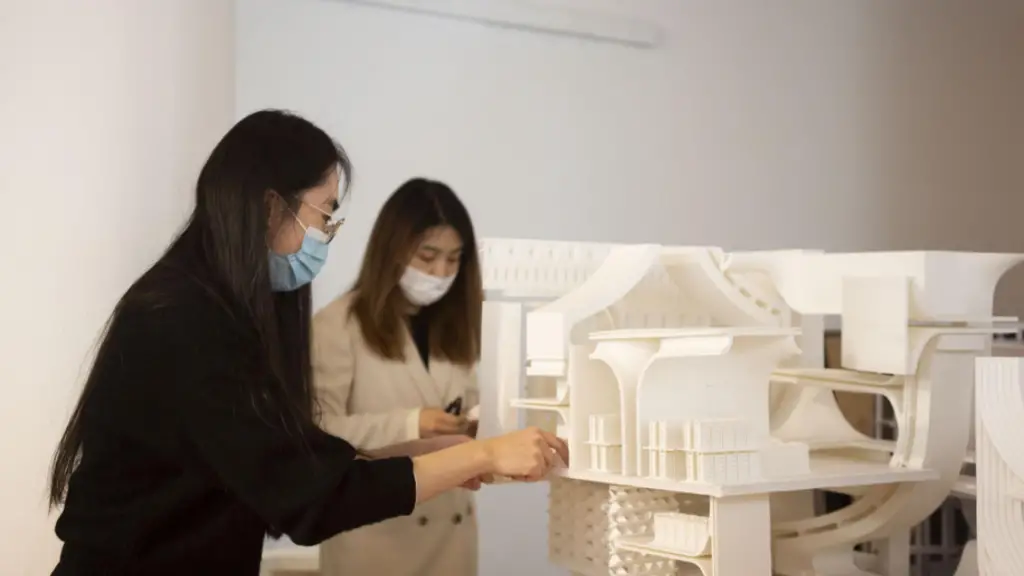
- Acceptance rate: 6%
- Average entry score: 1460-1570 SAT or 33-35 ACT
- Student-to-faculty ratio: 7 to 1
- Estimated cost of attendance (tuition and fees): $65,790
- Average earning potential for graduates: $50,172 (College Factual)
PennDesign provides a comprehensive architectural education that seamlessly integrates design, technology, and theory.
The school encourages students to explore interdisciplinary approaches and collaborate with professionals in other fields, ensuring they are well-equipped for success in the rapidly changing world of architecture.
PennDesign’s diverse curriculum, experienced faculty, and state-of-the-art facilities create an environment that nurtures creativity, critical thinking, and problem-solving skills. This prepares students for a successful career in the architectural industry.
Source: Weitzman School of Design
#6. Yale University

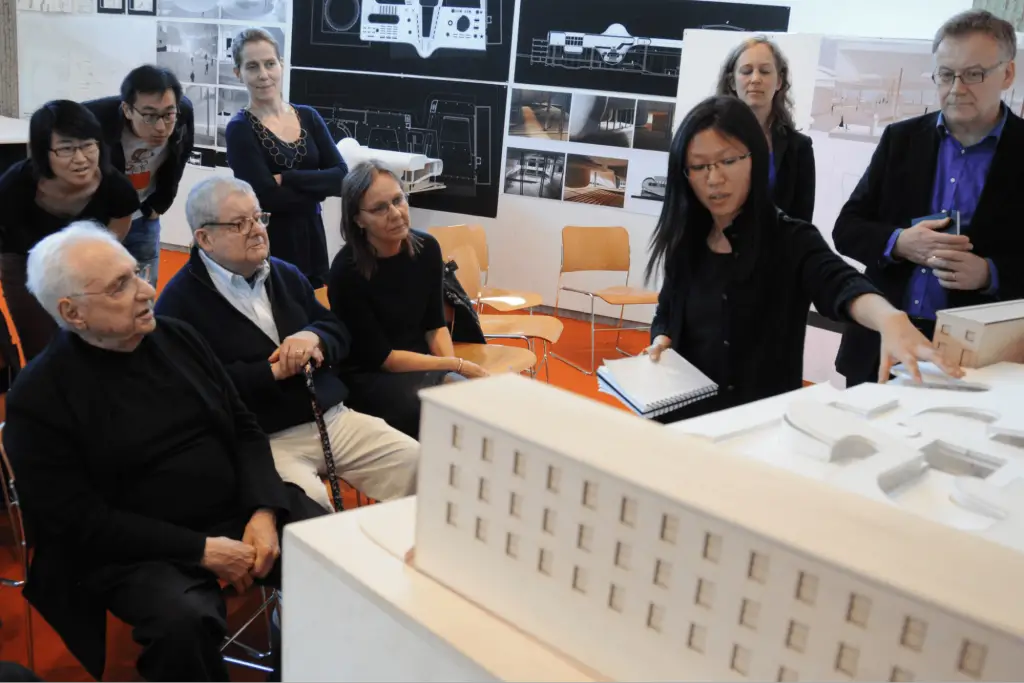
- Acceptance rate: 5%
- Average entry score: 33-35 ACT
- Student-to-faculty ratio: 6 to 1
- Estimated cost of attendance (tuition and fees): $84,525
- Average earning potential for graduates: $64,046 (College Factual)
Yale School of Architecture offers a rigorous design education that is complemented by a strong focus on liberal arts. The school’s esteemed faculty and diverse curriculum inspire students to develop their unique architectural vision, preparing them for success in the field.
With a rich history of architectural excellence, Yale provides students with access to cutting-edge resources, research opportunities, and collaborations with leading professionals, ensuring a well-rounded and comprehensive learning experience.
Source: YSoA
What’s it like to study architecture at Yale University?
Similar articles like this:
- 25 Best Dental Schools In The US
- 25 Best Schools For Geology In The US
- 25 Best Schools For Marine Biology In The US
#5. Columbia University


- Acceptance rate: 4.1%
- Average entry score: 1440-1570 SAT or 34-35 ACT
- Student-to-faculty ratio: 6 to 1
- Estimated cost of attendance (tuition and fees): $85,000
- Average earning potential for graduates: $58,013 (College Factual)
Columbia GSAPP (Graduate School of Architecture, Planning, and Preservation) delivers a cutting-edge architectural education that seamlessly blends design, technology, and critical thinking.
The school’s global perspective encourages students to engage with diverse cultures and urban environments, fostering a deep understanding of the role of architecture in shaping the world.
Students benefit from a rich curriculum, hands-on design studios, and opportunities for international travel, all of which contribute to a dynamic and transformative educational experience.
Source: Columbia GSAP
#4. Harvard University


- Acceptance rate: 4%
- Average entry score: 1460-1580 SAT or 33-35 ACT
- Student-to-faculty ratio: 7 to 1
- Estimated cost of attendance (tuition and fees): $76,963
- Average earning potential for graduates: $58,100 (College Factual)
At Harvard’s Graduate School of Design, students engage in a rigorous curriculum that emphasizes design innovation, critical thinking, and research.
The school’s interdisciplinary approach allows architecture majors to collaborate with professionals in other fields, fostering a holistic understanding of architecture and its impact on society.
With personalized education, renowned faculty, and a vibrant learning environment, Harvard prepares graduates for successful careers in architecture and design.
Source: Harvard Graduate School of Design
What’s it like to study at Harvard University?
#3. Massachusetts Institute of Technology


- Acceptance rate: 4%
- Average entry score: 1570 SAT or 36 ACT
- Student-to-faculty ratio: 3 to 1
- Estimated cost of attendance (tuition and fees): $77,570
- Average earning potential for graduates: $59,989 (College Factual)
MIT’s School of Architecture and Planning fosters a dynamic learning environment where students delve into the intersection of technology, design, and society.
With a research-driven approach, the school encourages learners to engage with innovative ideas, equipping them with the necessary skills to shape the future of architecture.
Students benefit from a diverse range of courses, hands-on experiences, and collaborations with industry professionals, ensuring they are well-prepared for their careers.
Source: MIT Architecture
#2. Princeton University


- Acceptance rate: 4%
- Average entry score: 1570 SAT or 35 ACT
- Student-to-faculty ratio: 5 to 1
- Estimated cost of attendance (tuition and fees): $78,490
- Average earning potential for graduates: $61,020 (Grad Reports)
Princeton’s School of Architecture provides a rigorous and innovative education that encourages students to explore the intersections of design, theory, and technology.
With a renowned faculty and a research-driven approach, the school prepares graduates for leadership roles in the field of architecture.
By fostering intellectual curiosity and promoting interdisciplinary collaboration, Princeton’s School of Architecture empowers students to develop creative, technologically advanced solutions that address the complex challenges facing the built environment in the 21st century.
Source: Princeton University School of Architecture
#1. Stanford University


- Acceptance rate: 4%
- Average entry score: 1470-1570 SAT or 34-35 ACT
- Student-to-faculty ratio: 5 to 1
- Estimated cost of attendance (tuition and fees): $78,898
- Average earning potential for graduates: $79,800 (College Simply)
Stanford University’s Architectural Design Program encourages students to explore the intersection of architecture, engineering, and art.
The program emphasizes design thinking, creative problem-solving, and collaboration through studio-based courses, research projects, and interdisciplinary electives.
By fostering a culture of experimentation and innovation, Stanford prepares its graduates to become leaders in the architectural profession and shape the built environment.
Source: Stanford University
Conclusion
This blog post has explored the top architecture schools in the US, highlighting their unique programs, esteemed faculty, and state-of-the-art facilities.
By considering factors such as reputation, location, and alumni success, prospective students can make an informed decision to pursue their architectural dreams at the best-suited institution for their individual goals and aspirations.
Don’t wait any longer – start researching and applying to these outstanding schools today to kickstart your career in architecture!
Selection Criteria
Here is a list of the factors we considered when selecting the best schools for architecture:
Please note that the order in this list might vary by ranking criteria and sources.
- Reputation and ranking of the school: We looked for schools that have a strong reputation and high ranking in the field of architecture.
- Faculty expertise, qualifications, and specialization: We researched the faculty members and their areas of expertise, and qualifications to ensure that the school has professors with relevant expertise and specialization in the areas of architecture and design that are of interest.
- Curriculum and resources: We evaluated the curriculum to ensure it aligns with students’ interests and career goals and considered the quality of the school’s facilities and resources, such as labs, equipment, and libraries.
- Opportunities for hands-on learning and research: We looked for schools that provide opportunities for hands-on experience through internships, co-op programs, or fieldwork.
- Student support services and alumni network: We considered the availability of support services and the strength of the alumni network in providing mentorship, internships, and job opportunities after graduation.
- Extracurricular activities and diversity: We evaluated the availability of extracurricular activities and clubs that align with students’ interests and considered the school’s diversity and inclusivity.
- Networking and post-graduation support: We researched the school’s network of alumni and their post-graduation support for architecture and design students, and also considered if the schools have a strong network of industry professionals and researchers in the field of architecture.
Frequently Asked Questions
Q1. What are the top architecture schools in the US?
Some of the best architecture schools in the US include:
- Massachusetts Institute of Technology (MIT)
- Harvard University
- Yale University
- Columbia University
- Cornell University
- University of California, Berkeley
- University of Pennsylvania
- Princeton University
- University of Texas at Austin
- University of Southern California
These schools have highly regarded programs and faculty, with a strong focus on architectural theory, design, and practice.
Q2. What factors should I consider when choosing an architecture school?
When choosing an architecture school, consider the following factors:
- Accreditation: Ensure the program is accredited by the National Architectural Accrediting Board (NAAB).
- Curriculum: Look for a well-rounded program that covers various aspects of architecture, such as design, history, and technology.
- Faculty: Research the faculty’s qualifications, experience, and areas of expertise.
- Facilities: Evaluate the school’s resources, such as studios, workshops, and libraries.
- Location: Consider the school’s location and its potential impact on your lifestyle and networking opportunities.
- Cost: Assess the tuition fees, scholarships, and financial aid options available.
Q3. How long does it take to complete an architecture degree?
A Bachelor of Architecture (B.Arch) typically takes five years to complete, while a Master of Architecture (M.Arch) usually takes two to three years, depending on the program and your previous education.
Some schools also offer a combined B.Arch/M.Arch program, which can be completed in six years.
Q4. What career options are available for graduates of architecture programs?
Graduates of architecture programs can pursue various career paths, including:
- Architect
- Urban planner
- Landscape architect
- Interior designer
- Architectural historian
- Building conservationist
- Architectural photographer
- Construction manager
- Sustainability consultant
These careers can be found in private practices, government agencies, non-profit organizations, and academic institutions.
Q5. How can I improve my chances of getting into a top architecture school?
To improve your chances of getting into a top architecture school, consider the following:
- Maintain a strong academic record, especially in subjects related to architecture, such as mathematics, physics, and art.
- Build a diverse portfolio showcasing your creativity, technical skills, and architectural knowledge.
- Participate in extracurricular activities, such as internships, workshops, or design competitions, to gain practical experience and demonstrate your passion for architecture.
- Obtain strong letters of recommendation from teachers, mentors, or employers who can speak to your abilities and potential as an architecture major.
- Prepare a compelling personal statement that highlights your motivation, goals, and unique perspective on architecture.
References
[1] Official Websites
[2] Salary Data from Glassdoor, College Factual; College Simply, Zippia
[3] Ranking references including news media such as 2023 Best Colleges for Architecture in America.


